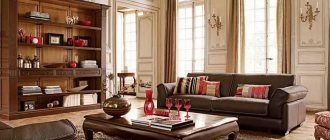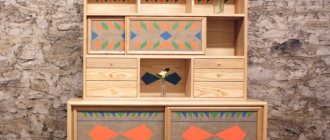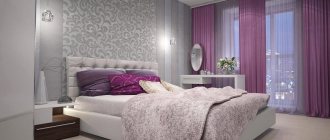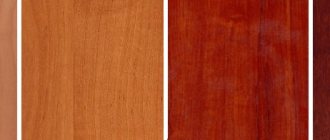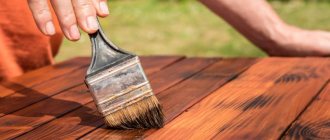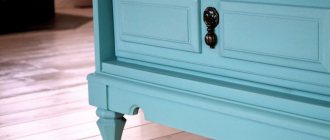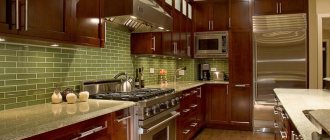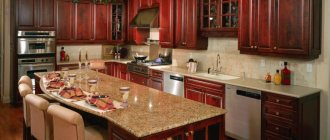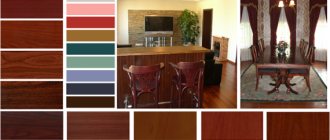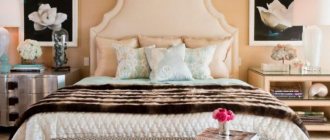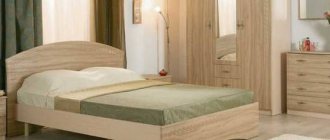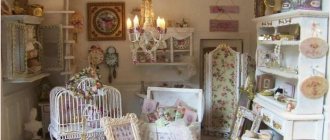The FasadTradeGroup company produces furniture facades from MDF, coated with paint according to the RAL color catalog with a quality guarantee and in a short time. The RAL color chart will allow you to specify colors and shades, which will minimize the possibility of misunderstanding between the customer and the contractor, ensuring a result that the buyer will be satisfied with.
RAL is an international color standard that was created in Germany in 1927. The initiators of its development were manufacturers of paint and varnish products. The color space, according to the RAL system, is divided into certain segments, where each color is assigned its own index. The RAL catalog is constantly updated with new color samples for facades, responding to current market needs.
The RAL color catalog includes:
- RAL Classic is the most popular, it is what we use in our work;
- RAL Design – catalog for professional color design;
- RAL Digital is a digital version of catalogs, used in design software.
- RAL Effect - includes matte shades, as well as glossy versions of metallic paints and water-dispersion paints. Appeared in 2007.
- RAL Plastics – color catalog for plastic.
Currently, the classic RAL color chart includes 213 colors. In general, the RAL system has several thousand positions.
If you order painted kitchen facades from our company, you can be sure that their color and shade will exactly match the one chosen in the catalog. Call! Our employee will take the necessary measurements and show you RAL color samples. This will make it possible to choose a shade that will go perfectly with the design of your kitchen.
Painted RAL facades from MDF
When choosing facades for their kitchen, many first pay attention to their design, and only then to the material from which they are made. Of course, comfort, coziness and atmosphere in the kitchen mainly depend on the beauty of the kitchen set and its color. It is for this purpose that painted facades made from MDF according to the RAL table are very popular today.
MDF is a fairly durable material that is easy to process, which allows you to give facades various, sometimes intricate, shapes. Kitchen furniture made of painted MDF is not afraid of temperature changes and high humidity, does not crack and is easy to clean. It is durable and strong. All bolts and screws used in the assembly and installation of the kitchen unit will hold securely throughout its entire service life. Painted MDF facades will make the kitchen bright, stylish, and unique.
Furniture colors
Before choosing a new set for your bedroom, living room or kitchen, you need to study the wide range of materials from which the interior items are made. For example, products made from veneered or painted MDF have many different colors and shades. Color solutions for upholstered or cabinet furniture made from natural solid wood are more limited and, as a rule, depend on the texture of the wood.
Furniture colors with names
How to choose the color of furniture for a small apartment or a spacious country mansion? The choice of color is particularly influenced by the overall design, size, and purpose of the living space. To decorate a modern living room, decorators advise using deep, saturated colors; for a bedroom, lighter shades are more suitable; in the hallway, it is recommended to use the texture of valuable wood species.
It should be noted that the color scheme may vary slightly among different manufacturers, but despite this, the entire variety of shades can be divided into groups. Each category has the name of the type of wood it corresponds to. Below are the most popular colors of furniture, photos with names will help you not to make a mistake with your choice and choose the right color.
Dark
Deep dark shades of the facade are often used to create aristocratic classic interiors. Exquisite design allows you to create an atmosphere of luxury and splendor in the interior, introducing notes of conservatism and respectability.
Dark shades include:
- walnut - traditional dark brown shade;
- wenge - blue-black or chocolate color;
- mahogany - spectacular dark burgundy decor;
- Ebony – African ebony has a unique black tone.
Ebony
Nut
Red tree
Wenge
To prevent the atmosphere from looking boring and dull, it is necessary to correctly select the shades of decorative coverings of the walls, floors and ceilings.
For furniture painted black, dark grey, chocolate or traditional brown, a neutral background is more suitable - this will create a calm, homely atmosphere. If interior elements with a mahogany texture are used to furnish a living space, it is recommended to choose wallpaper for the walls of a similar shade, but several tones lighter. A design with a dark color palette is ideal for spacious, well-lit living rooms, dining rooms, or hallways.
Dark wood tones
Light
Particularly popular are cabinet furniture items with light shades of the facade. Correctly selected colors can create the effect of maximum freedom and spaciousness in a small room. Light-colored natural solid wood is used to create interior doors and decorative wooden partitions. The snow-white surfaces of the facade fit harmoniously into any modern interior.
Decorated with gold or bronze floral patterns, the set will become a real decoration of the luxurious imperial style. Aged furniture in the Provence style is organically combined with blue and green wall coverings and is suitable for furnishing a country mansion or a small country house.
The most famous light shades include:
- Karelian birch - delicate yellowish tone with a pattern of knots;
- light ash - creamy background with an interesting smooth structure;
- pine - golden tone, characterized by richness;
- light beech - beige tone with a bright pinkish tint.
In fashionable modern interiors there are a wide variety of light facades: maple, pear, apple or acacia. By choosing furniture with a certain warm decor to decorate small, shaded rooms, you can fill them with light and add a little sunny notes to the overall interior.
Light beech
Karelian birch
Pine
Light ash
Intermediate
Neutral solid colors will help create delicate, pastel compositions, these include the texture of certain types of wood:
- cherry - has a rich reddish tone;
- alder - the texture has interesting reddish and rusty shades;
- oak - oak wood is easy to identify by its beautiful grain pattern.
Cherry
Oak
Alder
Moderately refined pieces of cabinet furniture that do not attract much attention add special chic and aristocracy to any interior style. Multi-colored furniture is used to decorate rooms in the style of pop art, shabby chic, Provence or neoclassicism.
The location of the texture pattern on the surface of the facade allows you to create the desired visual effect that changes the actual perception of the size of the room.
How to choose the color of furniture for rooms with non-standard sizes? To decorate narrow, elongated corridors with high ceilings, designers recommend using furniture that has an intermediate facade texture with a horizontal pattern.
Chipboard colors
Possible colors of laminated chipboard
How does the dyeing process work?
This is always a long and complex technological process, which consists of 6 - 10 stages.
- Preparing the base. To fill the pores and unevenness of the source material, a special composition is applied, which must dry. Then the surface of the workpiece is ground to perfect smoothness.
- Primer - prevents paint from being absorbed into the MDF board.
- Applying the required number of layers of paint in a special chamber. The workpieces are painted using a sprayer.
- Processing with fine sandpaper. The procedure is necessary to remove small roughness and paint drips.
- Varnish coating. Not used for matte finish.
- Glossy facades are polished.
To properly dry painted facades, special tools and equipment are used. Additionally, in the room where the workpieces are painted, certain conditions are created that promote faster drying of the painted surfaces:
- Air humidity up to 50%;
- Lack of dust and small debris;
- Drying the product at 60 degrees (takes 2-3 hours);
- The air temperature is strictly 24 degrees.
Some additional effects are applied manually. For example:
- Chameleon coating – promotes color changes when looking at the surface from different angles.
- Mother of pearl - creates a hazy shimmer effect.
- When applying paint with a metallic effect, the surfaces have a characteristic metallic sheen.
- Patina is the effect of antiquity. This facade gives the set a noble look, perfect for lovers of classics and antiques. It will look better on matte furniture.
Tips for choosing colors and the best combinations
In well-lit, spacious rooms with large windows, you can safely put dark things of any size. If the room is less than 17 meters, it makes sense to think about a mixed option. For example, black and white facades, where there is a lot of white. Or find reddish-brown things. They will add comfort to the home atmosphere.
Designers advise decorating small living rooms, bedrooms and kitchens only in pastel colors. Against the background of peach, milky, blue walls, a cabinet made of light beech or ash will look almost airy.
It is easiest to combine finishes with them and add bright details to the design. In other cases, this should be done carefully so as not to overload the space. If you want to create a strict design, look for inspiration in a cool palette. In warm weather, when there is not enough sun in the home.
How to combine different shades of wood in the interior
Wood color is a very broad concept. And those who renovate and furnish their home are often concerned about the issue of combining different types of wood and artificial wood-like materials. And this applies not only to furniture, but also to doors, parquet or other floors, ceilings, and baseboards.
A combination of different types of wood that share a warm tone
Combining different shades of wood in one room is not an easy task for a designer.
Designers do not have a common opinion on this issue - some combine colors and textures carefully, others boldly. But there are recommendations that will help make the situation harmonious:
- Do not use more than two or three types of wood or wood imitation at the same time.
- The baseboard can be the same color as the door, the floor or the wall.
- It is better to make small and interesting furniture in a contrasting color in relation to the walls - this way it will be more noticeable. It’s better to “dissolve” bulky cabinets in space by choosing the same shade for them as the walls.
- The shades of furniture, doors and other wooden surfaces should be either perfectly similar or noticeably different. But a slight difference in these elements of the situation will create a feeling of disharmony.
- Pay attention not only to color, but also to texture. If the wood has pronounced wavy lines, stripes, and rings, then furniture made from it will look better against a plain background. And objects that do not have a noticeable pattern can coexist with both patterned wallpaper and other, more textured types of wood.
- An original combination can be achieved by choosing wood species of different patterns and shades. But they must be made in the same style.
- Interiors are not always created from scratch - we also use things that we already had before the renovation. If suddenly the new does not combine with the old, some of this should be visually separated. For example, you can place a table on top of a rug and it will separate the piece of furniture from the wood floor.
- The color white wood is neutral. It is appropriate in many interiors, even in those where there are already objects made of brown or gray material.
The almost checkerboard black and white interior is diluted with the warm color of wood
We invite you to familiarize yourself with video recommendations from two practicing designers.
What is veneer and what colors does it come in?
Natural veneer (translated from German “spene” - “chips”) is a light and thin material, one of the types of wood sheets. It is glued over furniture made from composite materials to give the products a natural look, almost indistinguishable from solid wood. The colors of wood for furniture covered with veneer are also varied - there are covers made from chestnut, apricot, oak and many other trees.
From veneer you can create artistic facades like this
Most often, thin wood sheets are made from the following species:
- Oak _ It has many types, and they all have different shades - from almost white to chocolate. In addition, certain sections of the trunks are used to create veneer, so the shades and structures are even more diverse. Oak veneer is used not only for furniture, but also for doors, parquet and other items.
- Walnut . Despite the large number of varieties, it is predominantly dark brown.
- Maple . Wood and, accordingly, veneer from this species can have either an almost white color or different shades of brown.
- Cherry . Differs in red-brown tone. Cherry wood is used to create luxury furniture. Veneer from this tree is also highly valued.
- Wenge . Also used to create furniture, doors and other items. Color varies from brown to black.
- Pine . Furniture veneer is also made from this species - one of the most affordable. It has a light beige-yellow tint.
- Karelian birch . It is easy to recognize the veneer made from this wood - it has a unique marble pattern and the color of honey.
Furniture covered with veneer is almost indistinguishable from solid wood furniture
Colors of materials MDF, chipboard for cabinet furniture
The main color palette of materials used in the production of medical furniture cabinets.
The section - “colors of MDF, chipboard materials for cabinet furniture” presents the colors of materials - MDF, laminated chipboard, film colors, edge (trimming) colors - PVC, ABC.
When ordering furniture, keep in mind that when choosing different materials, the total cost of the order may change.
Melamine (laminated chipboard) - tile material
Melamine (laminated chipboard) - tile material
Melamine is a material used to finish countertops and other wooden furniture parts.
When making a melamine coating, a sheet of decorated paper (about 3/10 mm thick), impregnated with resin, is placed on a chipboard panel. Polymerization takes place under pressure at a temperature of 180-200C.
Melamine is resistant to scratches and abrasive wear.
| beech | alder | cherry | bleached oak |
| nut | wenge | metallic | light green |
| white crystal |
The perimeter of the table top is lined with ABS (PVC) edge, thickness 2 mm. Corners can be straight or rounded.
Plastic - plastic covering
Plastic - plastic covering
Plastic countertops are the most optimal combination of price and quality. The technology for producing plastic tabletops involves placing a sheet of plastic on a chipboard base. Properties and quality characteristics of products:
- Plastics used in the production of countertops do not change their color characteristics over time
- Countertops do not require special care
- Countertop surfaces are resistant to household chemicals
- All table tops have a veneered end part lined with decorative edge plastic
- The plastic tabletop has increased abrasion resistance
| Beech | cherry | 6875 D39 (Teak, matte) edge 726W Cherry Morgan | 6929 MT (Straw, matte) edge 4739 Plywood |
| 6873 D39 (Wenge, matte) edge 7792 Wenge | 7203 GLOSS (Marble, gloss) edge 462W Wild pear | 7090 (Turtle) | 6871 D39 (Douglas, matt) edge 4936 Titanium |
| 8060 | 7214 MT (Sand, matt) edge 8819 Finobronze | 5208 (Tiger) | Malachite |
| 7207 GLOSS (Onyx, gloss) edge 226W Acacia Lakeland | 9119 (Shagreen) | 6852 WG (Ash, matt) edge 9961 Ash |
The perimeter of the table top is lined with ABS (PVC) edge, thickness 2 mm. Corners can be straight or rounded.
ABC edge - edge colors
ABC edge - edge colors
ABC edge for plastic worktops 43 mm thick
ABC edge - edge colors
The perimeter of the tabletop is lined with ABS (PVC) edge, thickness 2 mm.
MDF - material colors
MDF board
MDF is a board made from very fine sawdust. In terms of its properties, MDF board differs from chipboard in its higher strength, moisture resistance and wide possibilities in terms of decorative processing.
Environmentally friendly material: production technology eliminates the use of epoxy resins and phenol that are harmful to health. It is made by dry pressing fine wood chips at high temperature and pressure.
The MDF board is laminated on top and edges with PVC film (wide range of colors), the bottom is laminated with white film. MDF table tops have rounded corners. Properties and quality characteristics of MDF products:
- Wide range of colors
- High moisture resistance
- Resistance to chemicals reagents
- High wear resistance (does not scratch, does not wear off)
- Durability
- Heat resistance (up to 90˚)
- Environmentally friendly (production technology excludes the use of epoxy resins and phenols that are harmful to health).
MDF - matte (regular price)
| beech | cherries | Pink | wenge |
| cherry | white maple | alder | larch |
MDF - expensive (color options with extra charge)
| anegri | eggplant | lime | Florence |
| lavender bronze | pearl lavender | metallic |
Good luck and enjoy choosing furniture!
